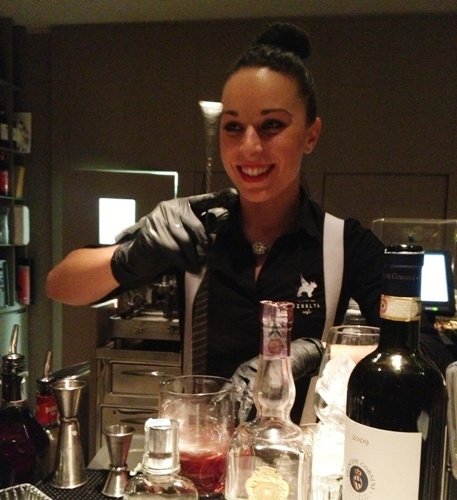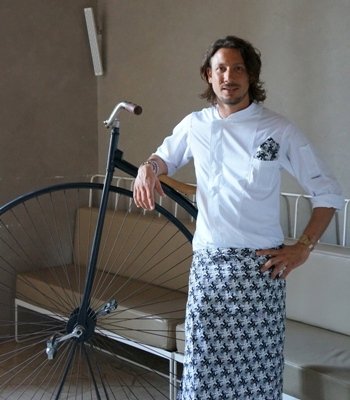What’s the essence of Florence in a mouthful? There can be few doubts: it is lampredotto. This is one of the four cattle stomachs, slowly cooked in water, tomato, onion and herbs and traditionally sold in a sandwich by the lampredottai on street corners. This humble dish has a rich history and today appears in restaurant menus and has even been the focus of a challenge between the chefs of Florence and Lucca with a tie (1-1) result after Florence won recently.
Apart from historic lampredottai, one of the best is the one selected by Lorenzo Nigro, one of partners at fashionable Rivalta Café together with Domenico Montano, son of a Florentine restaurateur. A young spirit characterises this establishment and the various events created by Lorenzo, but for him lampredotto is a family tradition. «My grandparents began selling tripe and lampredotto in 1952; in order to earn some extra money, my grandmother would prepare sandwiches in front of the house in the heart of San Frediano, the historic neighbourhood in Florence where trippai were introduced. Over time, my grandfather opened a workshop where he would process the tripe he selected himself, and he would then sell it all over Tuscany, down to Siena, with the help of my father and mine too, later on». He was the only one to cook in a wood oven and because of the evermore severe regulations, in 2000 Lorenzo’s grandfather decided to close his business.

Behind every Rivalta's cocktail, there's Rachele Giglioni
followed this heritage and created a distribution service widening the network of clients, both butchers and restaurants, more and more. In fact, he only chooses highly selected suppliers even though he doesn’t deny he would like to make his own lampredotto, in the future, just like his grandfather. For the time being, he is satisfied with preparing it for his friends, from time to tome, or for some event at
Rivalta, always receiving lots of praise. «Since I’m not preparing it every day, I put all the attention I can: I choose the best raw materials, I don’t use stock cubes, I cook it slowly. I love it au naturelle, with salt and pepper, but for those who prefer it, I also make a spicy sauce and a rather unique green sauce».
What should one drink with this? Thanks to a chat between friend
Paola Mencarelli, an expert foodie and a gastronomic consultant, and barwoman
Rachele Giglioni of
Rivalta Cafè, the idea of creating a cocktail made specifically for this dish was born. Originally from the Marche,
Rachele moved to Florence for her studies and is a passionate self-trained barwoman: after the first cocktails mixed almost by chance in the bars of some friends, she arrived at
Rivalta and less than one year later she became the head-barwoman. After
Giglio (Martini Bianco, Martini Prosecco Sigillo Blu, China Martini, elder syrup and grapefruit juice) thanks to which she won the
Martini Royale Contest, last year, she scores once again.
«To match this symbol of Florence – she says – I needed something that would be equally Florentine. So I though of
Negroni, created by Florentine barman
Fosco Scarselli in the Twenties for count
Camillo Negroni, with a modern twist given by the wine. I chose
Principe Corsini’s
Chianti Classico Fattoria Le Corti, not only because this winery right on the edge of Florence supplies us with many products, but also because Rivalta is located on Lungarno Corsini».

Il titolare Lorenzo Nigro
This is how
Principe Corsini was born, receiving the approval of the heir-producer of this noble family. To make it even more Tuscan, a large part of the other ingredients is also from the same region: ½ of the very rare Vallombrosa Gin,
a teaspoon of Alkermes from
Officina Profumo - Farmaceutica di Santa Maria Novella, to which
Rachele adds – in proportions that are slightly different from the Negroni recipe, to balance everything – ¾ of Vermouth Bianco Cocchi. The match between the Principe and the humble lampredotto conquered the participants in the
Disfida delle Frattaglie (literally the Challenge of the Offal) where it was first presented. It will also be possible to taste it at Rivalta, on the evenings dedicated to this monument of Florentine gastronomy.